
Staying a neckline or armhole will ensure that you have a polished, professional, gap-free look when making garments with a scoop neck or a sleeveless armhole. The underlying idea behind staying a neckline of armhole, is the stretch of the bias, on the curve. Some people say I’m a bit paranoid about staying, and my preparation is a bit of overkill. BUT-my necklines and armholes don’t gap!

Mark a seam line and cutting line with a dual tracing wheel and
carbon on the back side of the fabric. Use a 1″ (2.4cm)wide seam
allowance, folks-it provides “insurance” if you need it, and you can trim it off later if you don’t. 
You may wish to darken the line, if you are worried that it won’t show
up later. The pencils I use are either the Berol Prismacolor, or Schwann
Aquarellable. These have a soft lead and won’t distort the fabric. You can
also use a chalk wheel.
Tear strips of silk organza on the lengthwise grain. These are about 10″(24cm) long, and about 1 1/2″ (3.6cm) wide.

Use the lengthwise grain, because it has the least amount of stretch. And use silk if possible-it presses really flat. (You can substitute a manmade, but these have a little more “sproing” and won’t press as flat.) 
Press these strips in half lengthwise.
NOTICE WE HAVEN’T CUT OUT THE PIECE YET!
Pin the strips to the neckline seam, keeping the lengthwise grain parallel with the seam.
If you need to get around a deep curve, cut the strips shorter. Here they are about 3″(7.2cm) long. Overlap the strips by 3/4″(1.8cm). Stay the neck seam first… Then stay the armholes. Here you have the organza strips pinned into place, ready for the basting. Now hand-baste the strips to the seams. Make a short running…
Start your 14-day FREE trial to access this story.
Start your FREE trial today and get instant access to this article plus access to all Threads Insider content.
Start Your Free TrialAlready an Insider? Log in



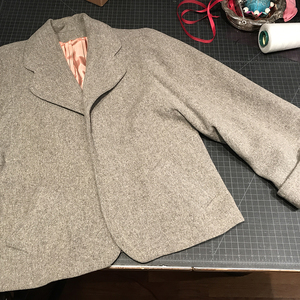
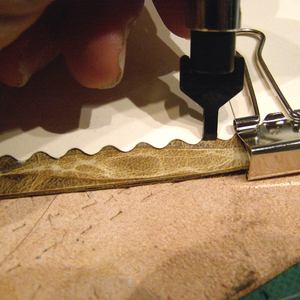
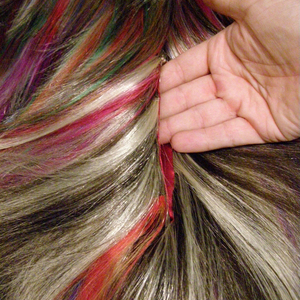
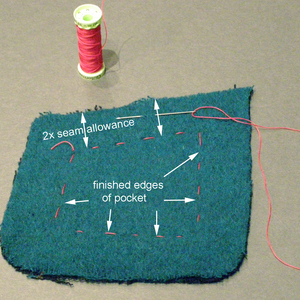
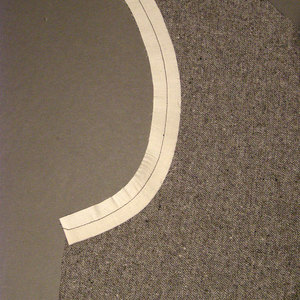


























Oh, I'm so glad you posted this! I took a class where you described this technique and I had a hard time picturing it. Now it's crystal clear. Thanks so much, Kenneth!
Excellent help for my bias bound silk tops, most made of tie silk. Thank you so much.
I am now a fan of yours Mr King.....this are wonderfull tips. I have a question: this will work out very well in a medium to heavy material, but, what can we do if the material is very light like silk chiffon???
Once again, you have wowed me. Good old common sense on this one that never entered my mind. I have stayed many garment lines but never with silk organza. Makes lots of sense! Thanks again, Linda Snyder
I like the results I have gotten when staying with silk organza because it is so low-bulk, especially after being washed for use under lighter fabrics.
I have even used it to stay fabric where I sew zippers in.
I have been searching for that silicone strip that is used on the inside of necklines of one shoulder garments and sometimes around the bottom edge of bras in order that the garment stays in place and adheres to the body. It also serves as a stay. Can someone please help!!!!!!
Does this technique work on knits, too, or does it eliminate the stretch factor?
Claudia
So, do you iron the stay back toward the seam allowance and then sew your facing? Otherwise, the strips would show on the right side.
To fabricholic: I thought about that for a few minutes and then I realized that the stay fabric is on the wrong side of the fabric. When you sew the fabric and facing right sides together and then turn the facing inside, the stay fabric is enclosed between the fabric and the facing.
This is brilliant! I wish I had thought of it.All the time you are handling a cut out garment--moving it back and forth from work table to sewing machine to pressing board, those bias edges are getting a workout. Stabilizing them before they even get cut out makes a lot of sense.
Thanks for showing us how.
When it comes to garment construction, there is no such thing as "overkill." If I'm going to do that much work, I'd like to do everything possible to ensure a good result.
(I've taken a class with Kenneth King as well, although this technique wasn't demonstrated.)
Thanks!
Thank you so much, Mr. King, for photos and instructions. One question, though, please. The strips of organza are folded in half lengthwise and pressed, so when they are laid onto the seamlines, are there two layers of silk? I can't quite see that from even the close-up photos. I assume that, folded lengthwise, the result is a 3/4 inch wide folded piece, correct?
This is so worth the time invested.
This is an excellent tip with superb instructions. Merci.
I had no idea you could use Prismacolor on fabric! thanks for the tip.
Pamrod. Is the silicone strip you are talking about clear elastic? If so, it can be purchased at most large sewing stores in different widths.
I forgot to mention how invaluable Kenneth King's instructions always are. It really moves my sewing to a more professional level. Thanks!
Hello!
To answer a couple of questions>
Yes, when the strip is pressed in half lengthwise, then both layers of the organza are caught into the seam--more strength. If you are staying a chiffon, you can use a single layer.
And, the strips aren't pressed towards the seam allowances. When you sew the facings on, everything is flat. If you're concerned about excess bulk inside the garment, then, after you sew the facings on, you can trim to 1/4" on the garment side of the stitching line. That will keep everything from bunching and showing through over the life of the garment.
Pamrod, that 'silicone' is also known as 'plastic elastic', among other things. Most fabric stores should have it in at least a couple of widths, and it's available on line too, especially from places that sell diaper making or swimsuit supplies, because it's so resistant to harsh washing and chlorine. The nice thing about it is that it does not stretch when sewn through like most braided elastics do, nor will it tear at the stitch holes, so you can pick it out if you have to and stitch it again.
It won't shrink and is machine washable and dryable, plus it seems to last forever.I see it more and more often used as a stay in ready made garments, especially knit shoulder seams. I've found it can sometimes be a bit sticky, clinging to either the presser foot or stitch plate, and I haven't figured out how to prevent that yet, though it doesn't always happen.
One thing I learned about this elastic is that before you cut your length or stitch it into place, you will get the best results if you first take a longer pieces than you'll need and stretch it hard with your hands, as far as you possibly can and then let it relax back to it's resting state. Do this at least 3 times before you cut it for length or sew it on, then it won't change length with laundering or use afterward.
Oops, forgot one thing. The elastic I just described in my earlier post is a thin, clear,film-like product. There's a different one I've only seen in ready made things like swimsuits, that has similar properties, but is thicker and usually a dark greyish colour. Don't know where you'd get that, but the clear stuff works just as well.
That is a technique I wish I had used in the coat I just sewed. I am sure it will be fine as it is, but I agree with you that there is no such thing as overkill! I love making things better - thanks for posting!
THANK YOU THANK YOU THANK YOU !!!
To answer a couple more questions:
If you're staying transparent fabrics such as chiffon, one layer of organza will serve well. If you're worried about the organza showing, the last resort is to use the self-fabric cut on the lengthwise grain--chiffon is a little more fluid than organza but will do the job.
And, if you're staying knits, it eliminates the stretch, so you'll want to make sure you can get your head through a neck opening, or make other provisions for getting it over the head (plackets, buttons and loops, etc.)
Mr. King - thank you! I do have a question - where did you get the dual wheeled tracing wheel? I have never seen one and checking a couple places on line couldn't find them. Thanks Haldis
Thank you so much for posting this. This is much easier to work with neckline and arm opeinings before the piece is cut out. Much easier for sheer fabrics.
To answer the question about the dual tracing wheel--It's made by Clover, and you can get them from Clover dealers. Also, try The Sewing Place, or the Clothilde catalog. One way or the other, you can get them...
This may be a silly question, but is it necessary to use silk organza fabric? I went to my local fabric store but they only carry a 100% polyester organza. Would this suffice? Thanks for the great instruction, I can't wait to try it in a dress I am making.
I like silk over polyester, because polyester has too much "sproing". You could substitute cotton organdy, as it's also thin, and presses flat. The polyester, though not ideal, would be my last choice but in a pinch I've used it.
Mr. King, Thanks for your response! I appreciate your expertise; it is invaluable to a novice like myself who desires a really great outcome!
@furballs: Have you tried using a teflon coated presser foot for stitching things like plastic elastic, vinyl, oilcloth, or any other sticky-type material? I love a teflon coated foot to make quick work of sticky stuff.
I just realized that I misunderstood what is meant by the "inside of the seam line". To me, sewing just inside the seam line would mean that I would stitch a tiny bit into the garment side of the piece. I called the place toward the garment edge "just outside of the seam line "! Yikes! All these years of sewing and no wonder some of my projects were less than successful. Thank you for such clear ins ruction and photos in your articles.